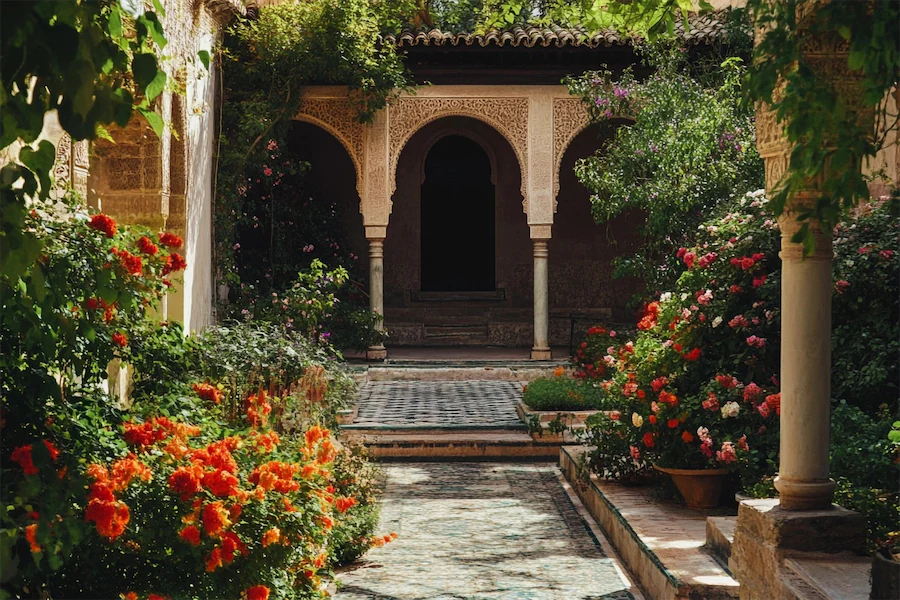A Moorish Garden is a distinctive style of landscape design that originated during the Islamic rule in the Iberian Peninsula, particularly in Al-Andalus (modern-day Spain and Portugal). These gardens are renowned for their intricate layouts, symbolic elements, and harmonious integration of architecture and nature, creating serene sanctuaries for reflection and respite.
History and Origins of Moorish Gardens
The concept of the Moorish garden is deeply rooted in Islamic traditions, where gardens are envisioned as earthly representations of paradise. This vision is often realized through the chahār bāgh design, a quadrilateral garden layout divided by water channels or pathways, symbolizing the four rivers of paradise mentioned in the Quran.
During the medieval period, the Moors introduced this garden style to the Iberian Peninsula, leading to the creation of some of the most iconic gardens, such as those in the Alhambra and Generalife in Granada.
Key Features of Moorish Gardens
- Geometric Layouts: Moorish gardens often feature symmetrical and geometric designs, creating a sense of order and harmony.
- Water Elements: Central to Moorish gardens are water features, including fountains, reflecting pools, and rills. These not only provide cooling effects but also symbolize purification and life.
- Lush Vegetation: The gardens are planted with a variety of flora, such as citrus trees, aromatic herbs, and flowering plants, chosen for their beauty, fragrance, and ability to provide shade.
- Enclosed Spaces: High walls or hedges often enclose Moorish gardens, creating intimate spaces that offer privacy and a retreat from the outside world.
- Decorative Elements: Intricate tilework, calligraphy, and ornamental arches are commonly incorporated, reflecting the rich artistic heritage of Islamic culture.
Applications of Moorish Gardens Today
The timeless appeal of Moorish gardens continues to influence modern landscape design:
- Residential Gardens: Homeowners incorporate Moorish elements to create tranquil and aesthetically pleasing outdoor spaces.
- Public Parks: Urban planners integrate Moorish-inspired designs to enhance the cultural and historical value of communal areas.
- Restorations: Historic Moorish gardens are preserved and restored, allowing visitors to experience their original splendor.
Considerations When Designing a Moorish Garden
- Climate Adaptation: Select plant species that are suitable for the local climate while maintaining the essence of Moorish aesthetics.
- Water Management: Incorporate sustainable water features that align with contemporary environmental practices.
- Cultural Sensitivity: Respect the cultural and historical significance of Moorish design elements, ensuring authentic representation.
Conclusion
Moorish gardens exemplify a harmonious blend of art, architecture, and nature, creating spaces that are both functional and symbolic. By understanding their historical context and key features, modern designers and enthusiasts can draw inspiration to create serene and culturally rich environments.
